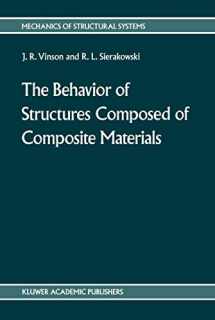
The behavior of structures composed of composite materials (Mechanics of Structural Systems, 5)
Book details
Summary
Description
While currently available texts dealing with the subject of high perfor mance composite materials touch upon a spectra of topics such as mechanical metallurgy, physical metallurgy, micromechanics and macro mechanics of such systems, it is the specific purpose of this text to examine elements of the mechanics of structural components composed of composite materials. This text is intended for use in training engineers in this new technology and rational thought processes necessary to develop a better understanding of the behavior of such material systems for use as structural components. The concepts are further exploited in terms of the structural format and development to which the book is dedicated. To this end the development progresses systematically by first introducing the notion and concepts of what these new material classes are, the fabrication processes involved and their unique features relative to conventional monolithic materials. Such introductory remarks, while far too short in texts of this type, appear necessary as a precursor for engineers to develop a better understanding for design purposes of both the threshold limits to which the properties of such systems can be pushed as well as the practical limitations on their manufacture. Following these introductory remarks, an in-depth discussion of the important differences between composites and conventional monolithic material types is discussed in terms of developing the concepts associated with directional material properties.


We would LOVE it if you could help us and other readers by reviewing the book
Book review



